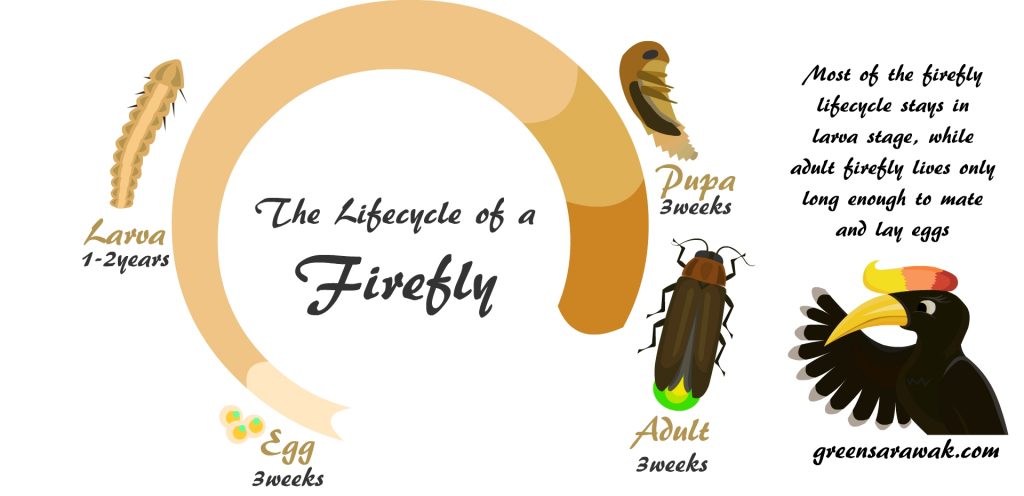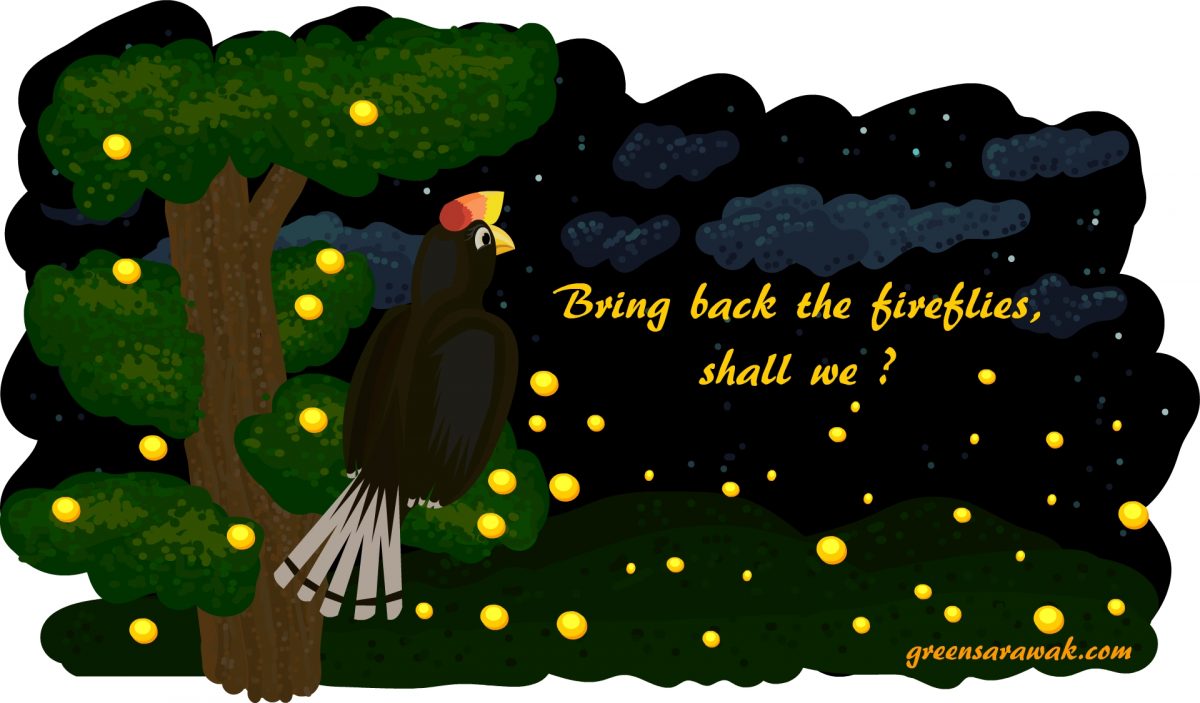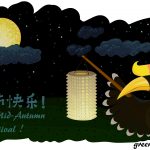Fireflies is a common sighting in the swamp areas, native rainforest, agriculture land and open fields with lake.
Urbanization and deforestation had been threatened the environment for the fireflies.
The fireflies are slowly disappearing from our childhood, and soon enough the next generation won’t able to experience the magical moments with the natural lanterns that brighten the nights.
Lets find out where there had been, shall we ?
Fireflies
The fireflies are also known as lightning bugs or lantern bugs. Fireflies are in the Lampyridae family, in the winged beetle order Coleoptera. They are group of beetles that have bioluminescence capabilities at their lower abdomen. In fact there is more that 2000 species across the globe. They are found in temperate and tropical climates, concentrated at marshes and wet woodlands where their larvae thrives.
The bioluminescence capabilities are prominent even in their laviform stage. An adult firefly use the bioluminescence to attract prey and mates during twilight. It emits cold light of either yellow, green or pale red.
The larva of fireflies stay burrow underground feeding on other larvae, slugs, snails and worm. The adult beetles diet varies according to species as some are predators while others feed on plants and pollen.
The bioluminescence beetle
Bioluminescence had been the hallmark of spotting a fireflies in the dark. However not all species exhibit bright bioluminescence. The nocturnal (night-flying) species are known to have bioluminescence in compared to diurnal (day-flying) species.
Bioluminescence is due to the chemical reaction at the beetles specialized light-emitting organs at their lower abdomen.
The luciferase enzyme acts on the luciferin, in the presence of magnesium ions, ATP, and oxygen to produce light.
These lights not only use to attract mates and preys, but also stands as a warning for upcoming predators as some of these fireflies are distasteful and toxic.
Tropical fireflies like the one found in Malaysian jungle are capable of synchronized flashing within the large groups, creating blinking lanterns along the rivers and forests. It is called phase synchronization phenomenon.
Fun Facts about Fireflies
- Fireflies talk to each other with light, especially during mating. Oftentimes the male will fly, while females will wait in trees, shrubs and grasses. The female will signal the male when found a suitable male. Some species use pheromones (chemicals) rather than just lights.
- Fireflies produce “cold light” which is considered the most efficient lights source (nearly 100% efficiency) as it doesn’t produce heat and lights in the invisible spectrum like normal electrical lights do.
- Firefly eggs glow. In some species, the larvae and even the eggs emit light in response to stimulus such as gentle tapping or vibrations.
- In certain areas, some fireflies species have the ability to synchronize flash among all the fireflies within an area resulting in a stunning magical orchestra of lights. It can sometimes seen in southeast asian mangrove forest throughout the years. Other places do have seasonal displays such as in the Great Smoky Mountains National Park, Allegheny National Forest, Oak Ridge Wildlife Management Area, Congaree National Park and Cajon Bonito Arizona.
- Fireflies are primarily carnivorous and some may eat other fireflies. The genus photuris, can mimics flashes of female photinus, in order to deceive and attract the male of that species and then eat them.
- Fireflies have short lifespans. An adult firefly lives only long enough to mate and lay eggs which may range 3-4weeks, compared to the larvae stage that have a longer lifespan of 1-2 years.
- Fireflies are found on almost every continent which have tropical or temperate region except Antarctica.
- The two chemicals found in a firefly’s tail, luciferase and luciferin, can be used to study many diseases, from cancer to muscular dystrophy, as both chemical produce light in present of ATP (energy molecules). Abnormal cells will have different energy requirements and production compare to normal cells surrounding it. It might give out different in intensity patterns.

Catching Fireflies – the hallmark of eventful childhood in the older generation
When asking the older folks on matters of fireflies, they will always answer – they are everywhere in the night, in the backyard, in the forest, along the rivers …
Some of them tells stories on how they catch fireflies in a clear glass jugs and use as a night lantern during their childhood. They are always been amazed by all this light emitting magical creatures.
“You can have a bottle of these at the corner of the room and stare at it whole night – those days are when candles are considered luxury items.”
Obviously these experiences are from older generation that stay at country side and rural areas. Urbanization had reduced the occurrence of fireflies in these areas to nearly non existence.
The declining population of Fireflies
Although there is more than 2000 species of fireflies around the globe, but why we seldom seen them ? For the newer generations, some had never met or seen these magical night lantern bugs before.
It is a sad story for what we had left to tell to the next generations. The magic in the air is slowly disappearing from our lives.
Many attributes the disappearance of fireflies to extensive use of pesticides, pollution of water, urbanization and deforestation, light and sound pollution etc. All these factors are all man-made. Are all these avoidable ?
Fireflies are loosing their homes
As all species around the world, there is always a place to call home. Might it be a hole in a tree, a cave, a cavern, a forest, a swamp, a lake, a grassland .etc . All these are native habitats for some species to thrive, to grow and to repopulate.
Fireflies usually habitats in warm and humid areas in temperate and tropical areas. They loves trees and waters. They roam near rivers and lakes. They spend most of their lifetime as a larvae form and only live short while flying around as an adult. As a larvae, they will stay in rotten logs and underground where their food (snails and slugs) are plenty. It was a wonderful back then when the forest are green and the river are blue.
Over the decades and century, human population also grows. Humans expands their land and harvest the native forest. Cities grows and agricultural land grows. Something in fact not growing over time is the land for native forest. The world still have limited and finate land areas as before, unless humans planned to shift their homes to other places like the open sea. It creates a imminent outcomes – the shrinking of the land suitable for the biodiversity of the native species.
When trees are uprooted and forest floor are cleared, the fireflies will lost their habitats. Without a suitable habitat, the larvae can’t thrive and the fireflies population reduces. It is possible that fireflies are becoming endangered species and going extinct one day. The next generation will only enjoy the fantasy of artificial lights and not the magical moments of light bugs of the nature.
Pesticide Kills
With the advancement in agriculture, there is more and more pesticides and herbicides use to increase the yield of crops. Certain vegetables can be harvested within weeks. In Sarawak itself, many lands had been converted for agriculture purposes, not limiting to paddy, pepper, cocoa, palm oil and vegetable plantations.
However using of chemicals in agriculture pest and weed control is not without side effects. These chemicals not only kills other bugs and worms, but also larvae of fireflies as well. It also polluting the underground and near by rivers as well.
Fireflies stay most of their time in larvae stage. Hence by frequent uses of chemicals, these larvae population is easily been wipe out but will need a longer time to replenish their population.
Overtime, less and less suitable breeding grounds are available for the fireflies and soon enough it will be slowly declining in population and becomes near extinct.
Light pollution
City lights is good for city folks but bad for fireflies.
Our civilization had been much advanced and developed, and our dependency on artificial lightings is never been a doubt. Having a artificial light to light up the dark is as simple as a flip of a switch. We can actually see the globe glowing with lights at night when seen from the satellite, especially big cities. It was not a case during the last few decades.
“Darkness is as essential to our biological welfare, to our internal clockwork, as light itself.” – Verlyn Klinkenborg, National Geographic, Nov. 2008
However too much light is also harmful to the nocturnal wildlife, environment and humans. Light pollution caused by inefficient use or unnecessary illumination from a artificial light source, which includes advertisement billboard lights, building surface flood lights and street lamps. Light pollution are seen as light trespass, over illumination, glare and sky glow.
Some of the fireflies using their light as a signal to attract a suitable mate. It is shown that when a male bug signals and a female bug feels the male is suitable, it will signal back. It is indeed lights of romance.
Similiar experiments had been shown that flashing a artificial lights on a group of flashing fireflies will cause the lighting display to be interrupted. A swipe of bright car headlights across a country road with fireflies will cause a moment of light silence and became out of sync.
Reverse the process by flashing light of certain wavelengths into a fireflies filled woods will make them try to response with synchronized flashes. They are just too sensitive to lights. They communicate by light.
If their communications in light are frequently interrupted by light pollution, their mating will be interrupted and hence their opportunity for repopulating.
The return of the fireflies ?
Many had been debate on whether to let this magical nocturnal creature to came back to our lives. But we all agree that we had lost much from our diversity of the natural wildlife directly due to human activities.
Sometimes it makes us sit back and think, are the native environment that was a gift from mother nature is not as important as development itself ?
They won’t be back if we don’t do anything about it and in the end it will become a lost memory of the past.
Many had suggested moves to prevent them from been extinct. Some of which can be easily practiced.
- Switch off unnecessary artificial lighting such as unused pavement lights, structural lighting and exterior lights. It might save the energy and some bucks in the long term and reduce light pollution generally.
- Reduce chemicals ussage in agriculture such as herbicide and pesticides. There are many organic alternatives available. Anyway fireflies and its larvae also eats other insects, which is a natural pest control.
- Having natural ponds and lakes at your landscape can help to promote the repopulating of snails, slugs and other food that might sustain a growth of fireflies larvae population.
- Plant trees and have natural decomposing woods and twigs will support the growth of the larvae of fireflies.
- Local awareness is also as important. Remember to remind others about the diminishing fireflies and how we can do to prevent their extinction.
So your next move ?





